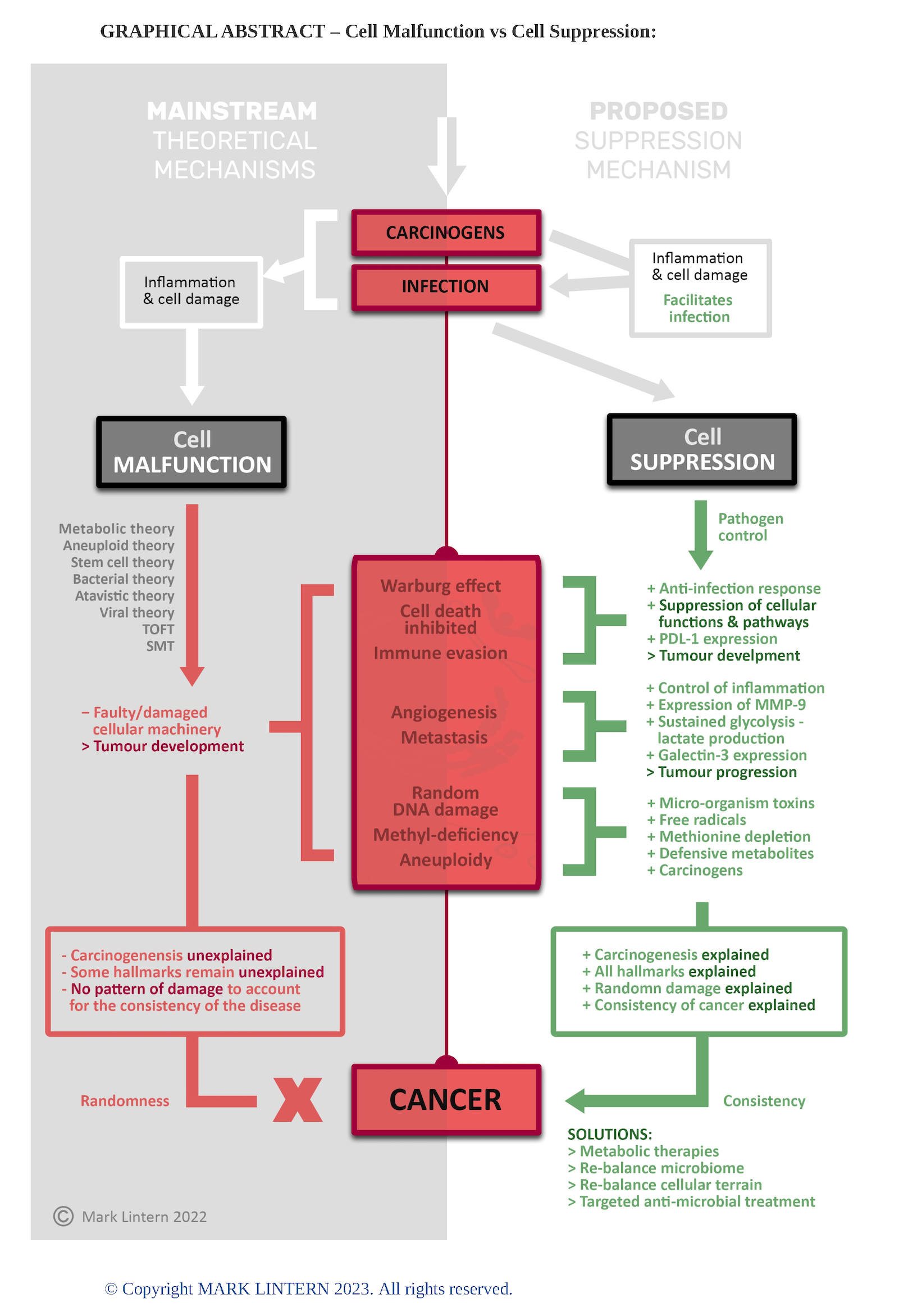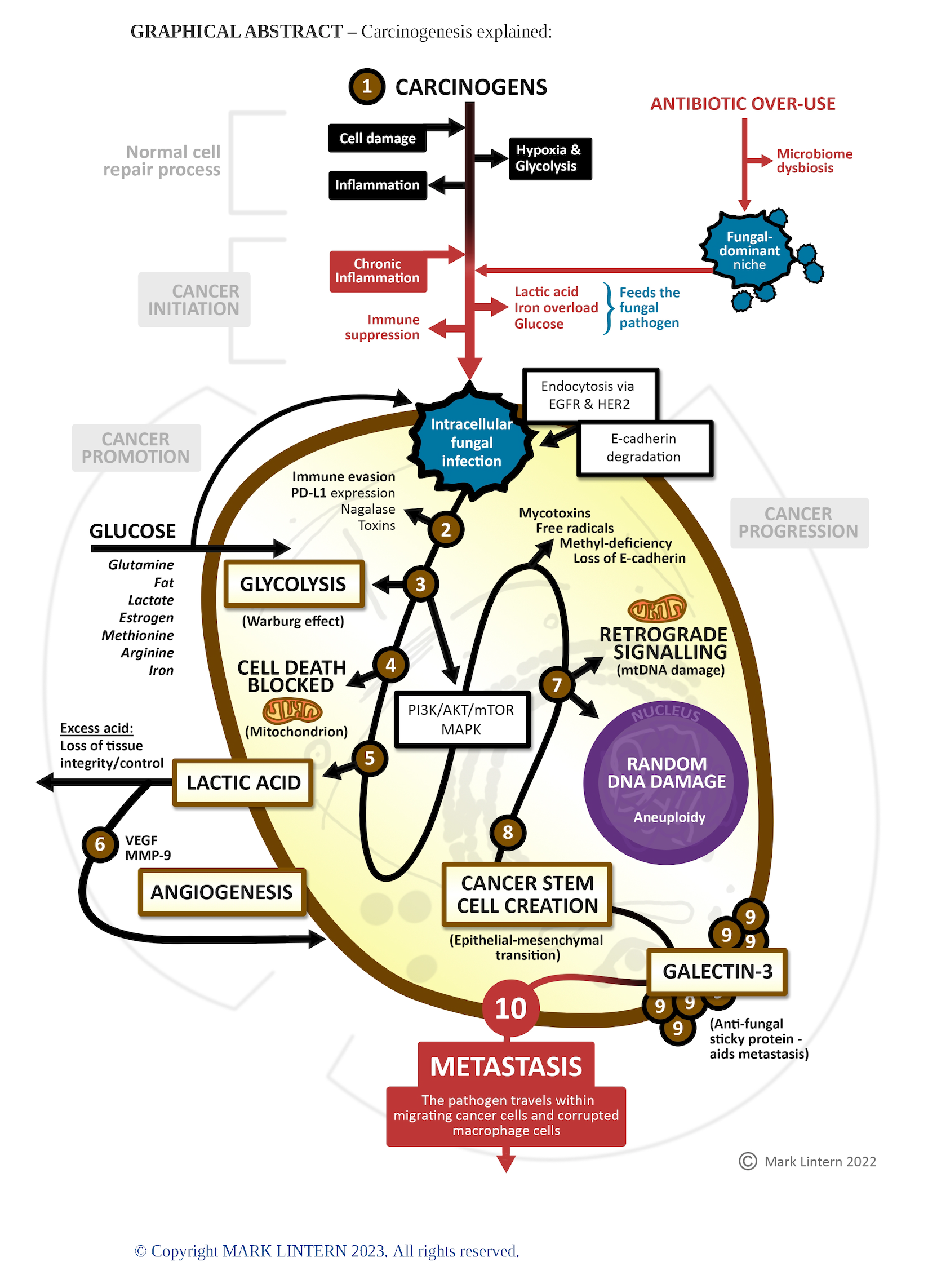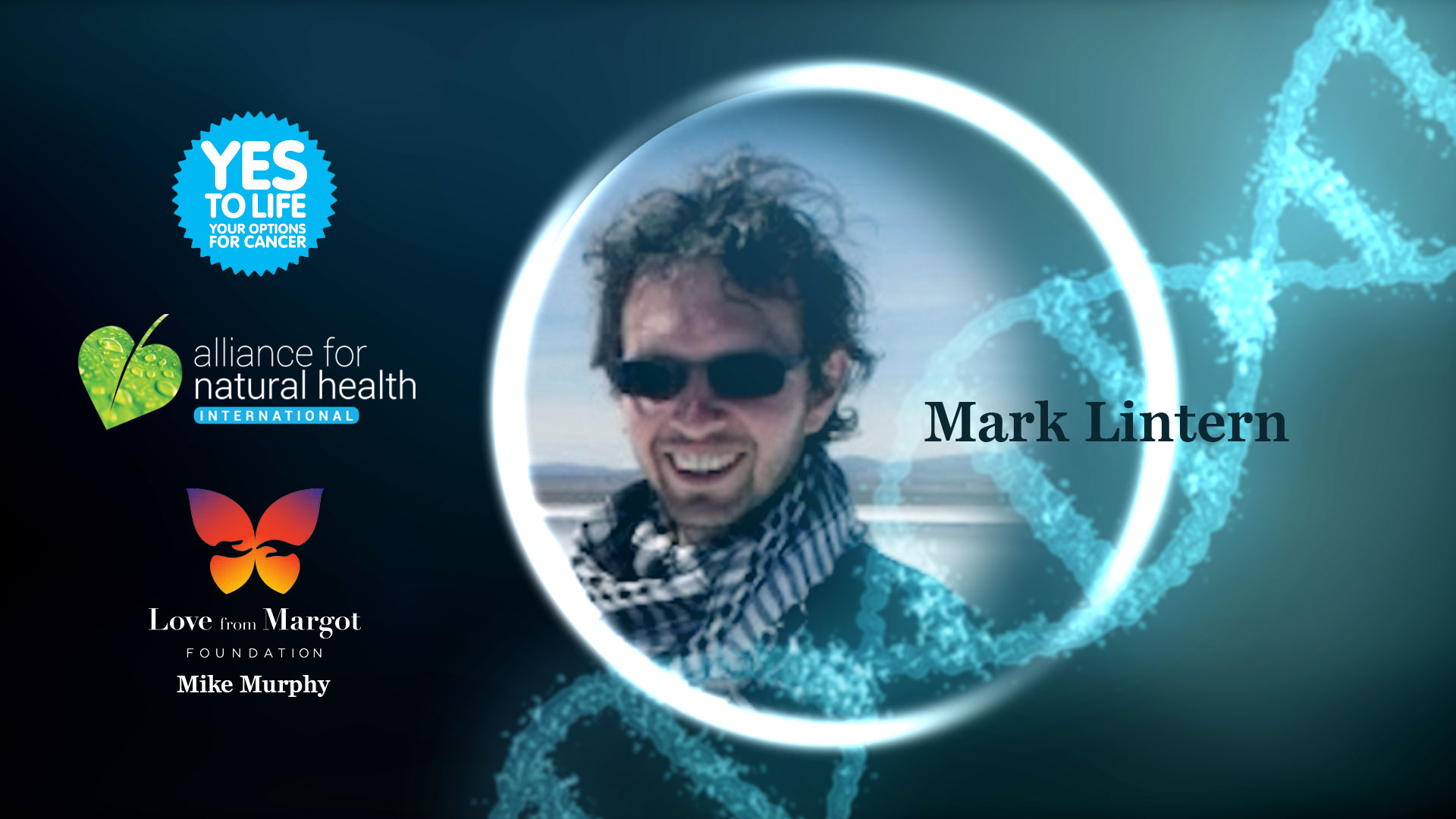Date:15 February 2023
Content Sections
- ● A cancer survivor’s lone quest
- ● Outside the mould
- ● Escaping dogma and embracing discourse
- ● The most memorable metrics
- ● Exciting excerpts
- ● What next?
By Rob Verkerk PhD
ANH-Intl founder, executive & scientific director
ANH-USA scientific director
Scientific advisor to Yes To Life
Imagine having cancer in your 20s and not feeling confident that the oncologists handling your case understand enough about the disease to be able to remove its threat to your life. Then losing the best friend of your most beloved to the same disease, when she was just 30.
A cancer survivor’s lone quest
It was these two very phenomena that set British graphic designer, Mark Lintern, on an 8-year journey, one that came to fruition last Sunday. That’s when the fruits of his research were subjected to scrutiny by an international group of cancer scientists and clinicians, along with cancer survivors-turned-experts.
The event that signalled a key milestone in Mark’s journey was organised by the UK’s integrative cancer care charity, Yes To Life, to which I’ve been a scientific advisor for over a decade. We at ANH were delighted to co-sponsor the event, and I was honoured to be asked to act as scientific co-host for the event, working alongside Robin Daly, the chair of Yes To Life, who hosted the event. Robin was inspired to set up the charity in 2005 originally to help support his daughter Bryony, and others like her, who battled from early childhood with recurring malignant tumours and intensive treatments, which, together, tragically robbed her of her life at just 23 years of age.
Mark’s journey caused him to interrogate in meticulous detail every piece of available scientific information he could find. He then turned each piece of the jigsaw around, and up-side-down, looking for consistency, as distinct from randomness, and the ability to explain known mechanisms of cancer, through Hanahan & Weinberg’s widely heralded hallmarks of cancer (2011 version, Hanahan 2022 revision).
>>> Check our Rob Verkerk’s 5 minute outline of the Cancer Through Another Lens conference below.
Mark Lintern’s desire to find rationality in a disease that so often appears deeply irrational is a big reason that his contribution is likely as important as it is. In the process, he’s provided a well justified dismissal of the dominant dogma of the mainstream cancer establishment, the DNA or somatic mutation theory of cancer.
He’s also found the sometimes controversial metabolic theory to be the most plausible of the available theories explaining the origins of the disease.
However, his real pièce de résistance is his new theory, that he argues entirely explains the origin of the disease – at least through the Hanahan and Weinberg mechanistic lens. One that consistently involves fungi and the suppression of cellular function. He calls this theory the cell suppression theory and argues it could open the door to new ways of looking at, researching, treating and even preventing cancer.
As his research journey has continued and as he has become ever more capable as a lay scientist, Mark has been compiling his work in the form of a book, one that is set to be over 600 pages in length with scores of scientific references.
Now that it’s been rated as valid by the majority of participants at the ‘Cancer Through Another Lens’ event last Sunday, it’s due for imminent publication.

Outside the mould
Mark’s journey has been far from the usual fare for a graphic designer. It’s been testing on his family and friends, some considering that his obsession had become something of a problem. But Mark’s passion and perseverance to get under the covers of this complex and highly variable disease has a ring of the Lorenzo’s oil story about it. But unlike Augusto Odone’s quest to save his son, in Mark’s story there is no oil, and there’s no patent or product. Nor is there a Hollywood film on the drawing boards. It’s of course too early to see how Mark’s proposed theory – the cell suppression theory – will stand the ultimate two tests. One involves time, the other involves winning over one of the most powerful and influential industrial sectors known on our planet – the pharmaceutical industry.
Another difference between Mark and Augusto Odone’s journey (the latter sadly passed in 2013, 5 years after his son) relates to the disease on which they each focused. Cancer, unlike ALD, is far from rare. In the UK alone, it accounts for around 1,000 new cases every day, has devastating impacts on families of those affected, and its economic burden, again only in the UK, has been estimated at an eye-watering £7.6 billion. Despite vast amounts of research, improvements in outcomes for people diagnosed with cancer have been modest at best.
Escaping dogma and embracing discourse
There were many things about the Cancer Through Another Lens conference that were ground-breaking. Being an online event was not one of them.
The event kicked off at 3:00 pm in the afternoon UK time and ran through to 9 in the evening in an attempt to reduce anti-social times for those on the West Coast of the US or as far afield as Australia. Mark gave 3 main presentations, and each was punctuated by a detailed Q&A session with a formidable team of panellists that I hosted. Not only that, over 20 electronic polls were taken during the course of the event that evaluated the participants’ level of confidence with statements that captured Mark’s key conclusions or views.
With around 150 audience participants present, each vetted following a scrutinised application process, any consensus in the polling system was going to be meaningful, as would any widespread rejection of Mark’s views. What’s more, there’d be some additional granularity in the polling data because the audience was divided into specialities, as follows: practising oncologists, other doctors, other oncology clinicians, oncology nurses, researchers, exercise therapists, nutritional therapists, other therapists, and one miscellaneous ‘other’ category to pick up anyone else.
There was plenty of opportunity for open, respectful debate, especially in the final 60 minute, “Where to from here?” section. Frankly, after 3 years of seeing the medico-industrial complex’s support for cancel culture and marginalisation of dissonant scientific voices, it was a revelation to experience proper discourse again.
Perversely, the history of science makes it abundantly clear that nearly all scientific leaps have occurred when dissonance was heard over the drone of the status quo – and when discourse was allowed to run. Without the capacity to push aside pedagogical beliefs that reinforce existing ideas often to the exclusion of new ones, there would be no electric light (Thomas Edison), internal combustion engines (Nickolas Otto), or AC current (Nikola Tesla).
But it was the views of the panel – polls from which could also be analysed separately – that would have been among the important determinants of the exceptionally well-informed audience’s views on Mark Lintern’s hypotheses on the origins and mechanisms of cancer.
We’ll be offering a more detailed breakdown of this data in a future article when the data has all been analysed, but we can offer you now some top level findings.
The most memorable metrics
When the detailed data are available from the 24 polls taken through the event I’ll be scribing another piece on this ground-breaking conference.
But here’s a key take home that shows just how much our views are affected by the data and information to which we’re exposed.
At the outset of the conference the poll of all participants – audience and panel – found that 13% felt that the DNA/somatic theory of the original cancer was the dominant mechanism causing cancer, with just 4% voting for intracellular infection. By the end of the conference, the tables had turned completely, with not a single participant supporting the dominant DNA theory. Not only that, some two-thirds of the audience gave a confidence vote of 8 or more (10 being fully confident, 1 being not confident at all) for the cell suppression mode, in which intracellular pathogens offer a plausible explanation for all the hallmarks of cancer.

Exciting excerpts
Some of the most important ‘guts’ of Mark Lintern’s arguments can be found in an excerpt that has been published on the yes To Life website.
>>> Read Cancer Through Another Lens synopsis on Yes To Life website
What next?
This milestone marks the beginning, not the end of a journey.
The fact that fungi (the mycobiome) appear to be associated with every tumour is becoming ever clearer. But instead of thinking of fungi as passive participants or opportunists in the development of the disease, Mark Lintern argues they are active players – critical ones even. This, of course, is a similar notion to that put forward by Italian doctor Dr Tullio Simoncini who was widely discredited for his view, and especially his preferred therapy involving treatment of tumours with sodium bicarbonate.
But the rapid progression of next generation sequencing, coupled with the rapid development of our understanding of the microbiome, latterly including the mycobiome, especially in light of evidence emerging from Dr Ravid Straussman’s group in Israel, mean that there is now serious credibility in any argument that includes the role of fungi in cancers.
Like any new way of looking at available data and information, at least as many questions are thrown up as others are answered.
For example….
- Are the Hanahan and Weinberg hallmarks a definitive way of searching for clues as to the origins of cancer?
- Could there be multiple origins of the disease and not a single one, so making the search for a single explanatory theory for the origins of cancer ultimately a fruitless exercise?
- Should we be prepared to accept not a single unifying theory that explains cancer, but several, or many, theories that, together, explain the more than 200 different types of cancer that have so far been described?
- Can we accurately enough separate those factors that trigger cancer as compared with those that mediate what we know is nearly always a multifactorial disease?
- Is there adequate experimental and clinical evidence to back up the cell suppression theory?
- Could support for the theory cause an over-use of antifungal compounds, with deleterious, unintended effects on humans, or the development of significant resistance by fungi?
- Could the cell suppression theory act as a catalyst to open the door to a diverse range of prevention strategies and therapies that create beneficial changes to the micro- and myco-biomes of our inner and outer worlds?
Our ‘reading of the room’ on Sunday, that came both from the dynamic discussions we had and the polls themselves, suggested that Mark’s work had not just been taken seriously, but it also had helped to open or change the minds of many present. In itself, this is an extraordinary accomplishment for a layperson with no formal scientific training who then had to contend with panel and audience with such great experience of cancer. As I said to Mark after the event, this was an outcome he should feel very proud of, one that is a reminder that his last 8 years of work had been far from in vain.
Mark’s book will follow and we sense it is one, among a huge number of books that have been written on cancer, that will stand out from the crowd and will remain embedded in the disease’s history as a milestone, at the very least for the integrative oncology sector. This is, after all, the sector that has consistently delivered the best outcomes because of its ability to tackle this incredibly complex disease from multiple angles.
Find out more at the following two websites:
- Cancer Through Another Lens portal on Yes To Life
- Yes To Life homepage
- Buy the professional pre-release version of Cancer Through Another Lens
>>> Back to ANH International homepage

